Are Camera And Video Camera Lenses The Same
Cine lenses or cinema lenses are specifically designed to run into the specific demands of filmmaking. They tape continuous move and offer infrequent video quality, which makes them perfect for cinema production. A true cinema lens is highly superior to even so photograph lenses in terms of design, features, and construction. Thus, any lens that possesses the truthful capabilities of a cine lens will definitely price a fortune, with a price tag ranging anywhere between four to six figures.
In social club to savour some of the benefits of cine lenses without overspending, many go for cine-modified even so lenses.
Cine Lens Features & Characteristics
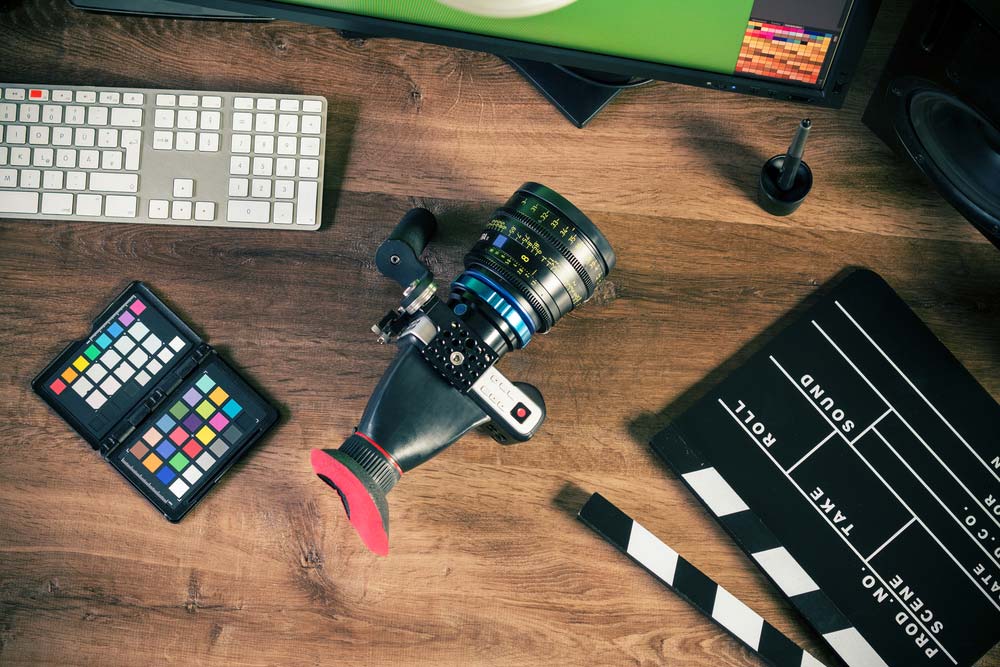
- Professional person Design
- Sturdy Build
- Precise Focus Control
- Light and Aperture Command
- Internal Zoom Control
- Infrequent Photo Quality
- High Price and Value
A cine lens may look like to other lenses, but they have several very distinctive physical and optical features. Discover out the virtually striking characteristics of cinematics lenses and why filmmakers merely won't go for whatever other lens.
Professional Pattern
Cinematics lenses definitely look more serious than professional photo lenses, cheers to their outside markings and manual aligning rings for aperture, zoom, and focus. But of course, autonomously from its outside appearance and controls, the cine lens has a sophisticated design that allows information technology to bypass many of the problems that photographers often encounter when shooting with still lenses.
Sturdy Build
These special lenses are built for heavy use. Typically, a true cine lens has a durable, all-metal body that makes information technology good for shooting fifty-fifty in the harshest weather conditions. It is noticeably bigger and heavier compared to photo lenses, and comes in one standard or fixed bore as this allows the shooter to use a wide range of accessories (and fifty-fifty cameras) with every lens. If using matte boxes, the standard diameter allows you to utilize dissimilar lenses without having to worry if the front lens diameter will fit.
Precise Focus Control
One of the best and most important features of a cine lens is its power to maintain focus on moving subjects or smoothly switch focus from 1 subject to the other. Moving subjects in a motion-picture show scene are kept in focus by slowly rotating the focus ring and "following" the subject area. This is a difficult feat with regular still lenses, as their focus rings have no difficult stops and will require extreme precision on the user'due south role to reach proper focus while following a moving subject field. On the other hand, a cinematics lens has a focus ring with conspicuously visible markings and hard stops at the first and at the end. This makes it much easier to get accurate and smoother focus pulls every time, even without the help of a follow focus system.
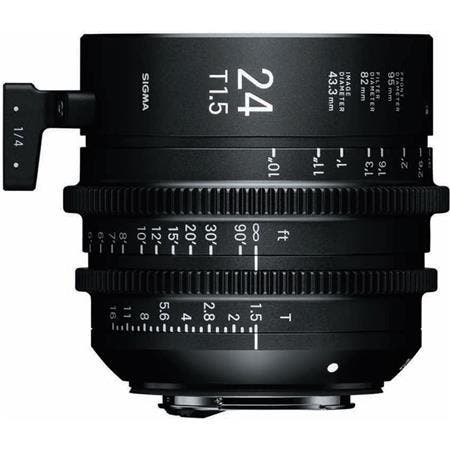
The focus ring on the cinematics lens allows the rotation of past 270 degrees, from the minimum focusing distance to infinity, for more focus throw. Focusing is also steadier, which means that focus animate is significantly reduced. If you've worked with even so lenses before, then you're likely familiar with "focus breathing."
Cinematics lenses are also parfocal lenses. These are lenses that are able to keep their focus locked on subjects fifty-fifty when you lot zoom in on a particular scene. With a non-parfocal lens, the simple act of zooming in or out may change your focus, requiring yous to refocus your shot. And since zooming is an unavoidable role of cinematography, a cine lens (a true cine lens that is parfocal) will allow you to smoothly zoom in or out without losing focus.
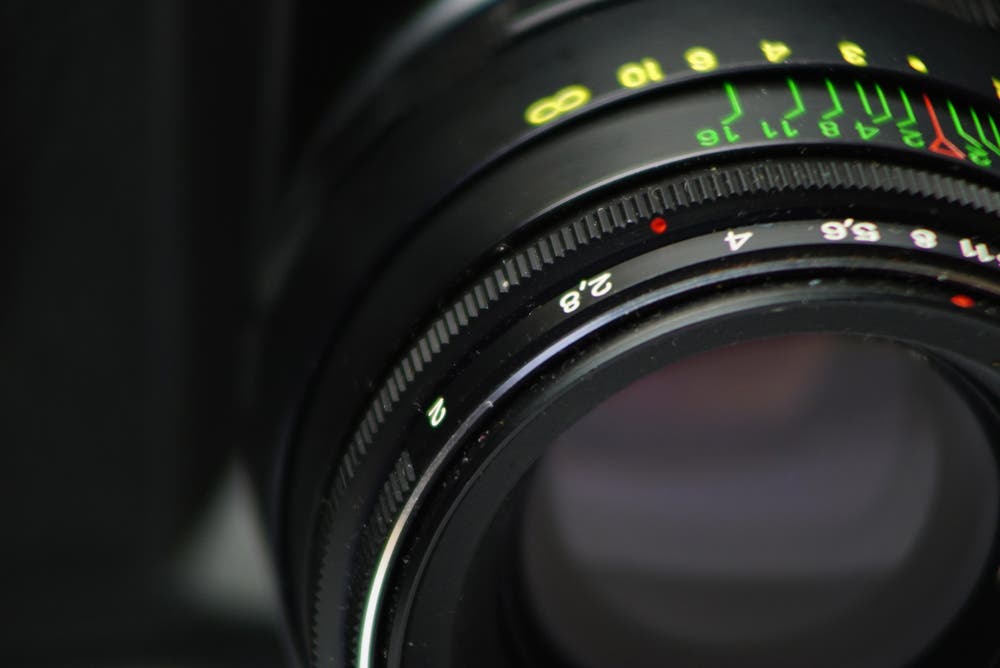
Calorie-free and Aperture Command
Dissimilar other lenses, cine lenses don't just control the discontinuity. Cine lenses take iris rings with T-end markings (equally opposed to f-stops) that give you the verbal mensurate of the corporeality of light that actually passes through the lens, instead of how wide the lens opening is.
This cine lens-only feature offers high-precision transmission control over the exposure and allows y'all to maintain your exposure in every scene, regardless of the atmospheric condition and ambient exposure. The iris band is likewise click-less, so yous can adjust the discontinuity much more smoothly and change the exposure without taking your audience out of the story.
Internal Zoom Control
As with about professional lenses, you tin zoom in and out with the cine lens by rotating the zoom ring on its trunk. However, information technology doesn't aggrandize or alter in length as it adjusts the focal distance internally. This offers great convenience for filmmakers, especially when their photographic camera rig is on stabilizer systems that can be thrown off remainder by a slight change in focal length.
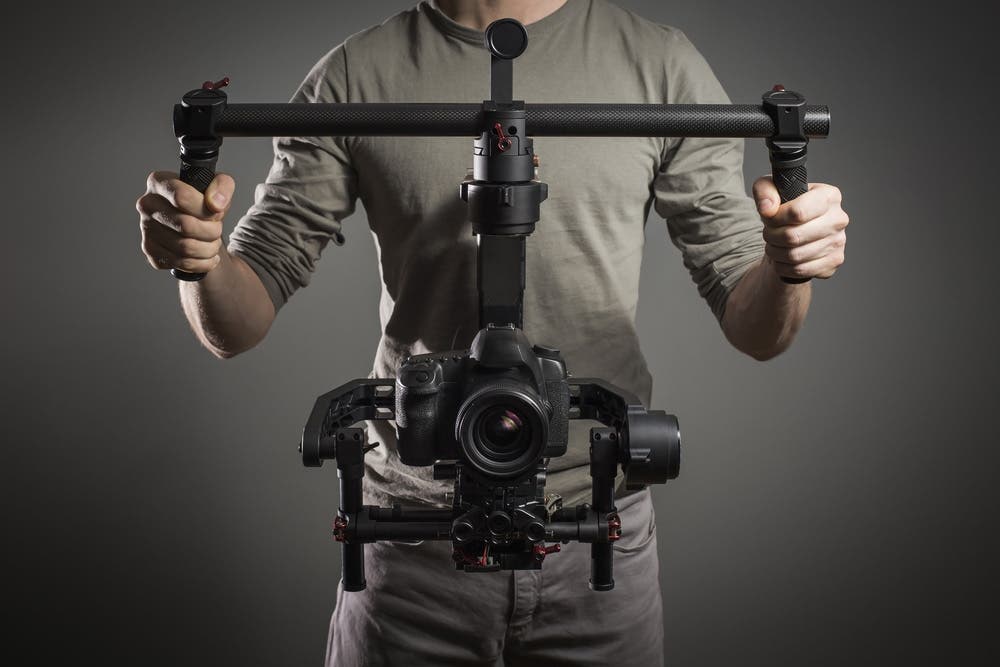
And similar cine lenses' focus and iris rings, the zoom band is always smooth and delivers the smoothest transitions between different focal distances.
Exceptional Optical Quality
The optical quality of a lens is highly dependent on the glass. A premium even so photography lens is normally made of loftier-end glass and is therefore a viable options for video in terms of optical quality alone. And while the optical functioning of a cine lens and however lens may seem like under regular filming circumstances, information technology is when the lighting is difficult where cinematics lenses truly shine. Cine lens glass allows it to shoot nether difficult lighting conditions, such equally under direct sunlight or fifty-fifty scenes with high contrast.
Although there may be slight differences in color and contrast betwixt lenses of different brands, same brand cine lenses will usually have consistent image output.
A cine lens is also built to ensure complete sharpness across the frame (even in corners). They too reduce or eliminate chromatic aberrations, barrel distortion, and vignetting—all of which are highly noticeable in video.
While not a requirement for about filmmakers, cinema lenses also produce beautiful out-of-focus blurring (bokeh) and attractive light flares when combined with a shallow depth of field.
Loftier Value and Price
I disadvantage with cinematics lenses is that they are very costly. Premium cine lenses can cost up to $100,000 (or perchance more) so they're ordinarily simply rented out. However, there are more affordable options, like pseudo-cinematics lenses and cine-modernistic photo lenses, which are basically digital photo lenses that offer some of the functionalities of cinematics lenses and can be used on DSLRs, mirrorless, and compact moving-picture show cameras.
Cine Lens vs Even so Photo Lens
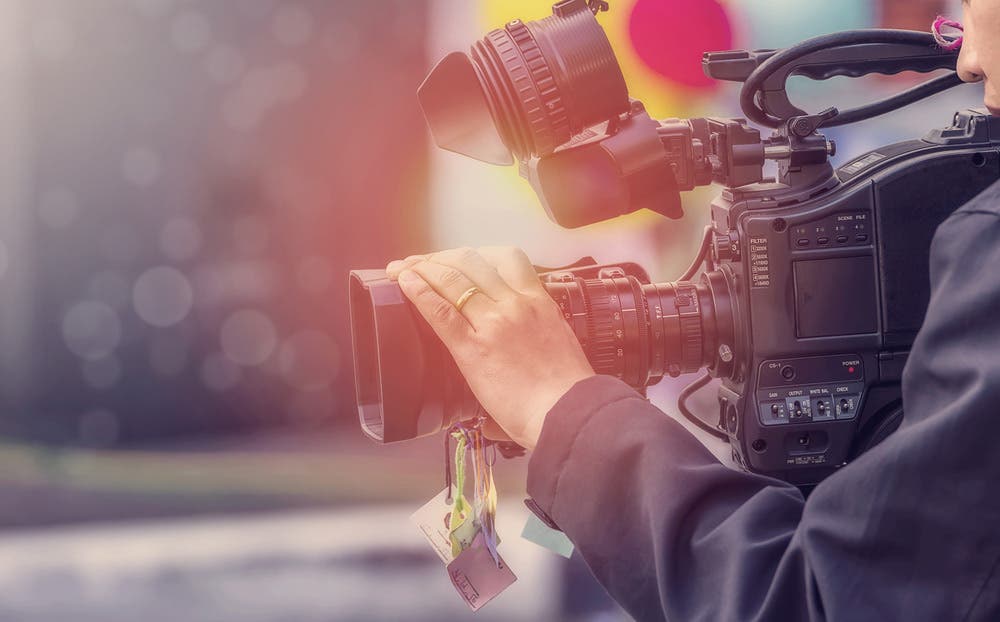
- Manual Lens Settings
- Output Quality
- Size and Price
Due to the popularity of modern cine lenses, many brands take adult pseudo-cine lenses and cine-modernistic photo lenses so others tin can enjoy some of the functionalities and benefits that cine lenses have to offer. Below are just some of the main differences between these cine lenses and regular notwithstanding photograph lenses:
Manual Lens Settings
At showtime await, cine lenses may look similar certain photograph lenses, just the old is noticeably congenital with more rings for manual focus, zoom, and aperture adjustments.
Nonetheless photo lenses, fifty-fifty those that are widely-used for cinematography on DSLRs, have electronically adjustable settings, which means some settings (like the aperture and focus) are changed with a press of a button or a slide of a band, sometimes via a carte du jour on the camera'south screen. With cinematics lenses, on the other hand, the focus, zoom, and iris are easily adjustable on the body and have a much smoother operation. You are as well assured of getting exact results, thanks to the markings on each of the cine lens rings.
The focus ring on cine lenses too has more than focus throw, every bit you can rotate it by 270 degrees (unlike in photo lenses) when moving from the minimum focusing distance to infinity.
Output Quality
The almost amazing benefit in quality is that cinematics lenses are able to offer consistent output in terms of lighting and exposure, thank you to the iris band's highly-calibrated T-stop performance. While photograph lenses offering measurements of the opening of the lens (aperture F-cease), the cine lens offers offers a more exact measure of the corporeality of light that passes through the lens (iris ring T-stop). This cinematics lens characteristic enables the shooter to maintain continuity in scenes that were recorded hours or days apart.
All adjustable ring settings are also actress shine, so zooming in and out, as well as making any adjustments in focus and exposure are easier on the eyes and more attractive for the large screen. Unlike still photo lenses that have "jumpy" zoom rings, cine lenses offer smooth transitions between unlike focal distances, and so they're clearly the more than desirable choice for cinematography.
Another difference is that cine lenses within a given series are usually developed to evangelize matching image characteristics, such as color and sharpness. Photo lens brands are not as strict about color consistency, and so cine lenses are definitely easier to work with when you have to modify lenses.
Cine lenses have superior drinking glass that produce sharp images with little to no chromatic aberrations or visible vignetting, which are sometimes present in images taken using photo lenses. Even so, both types of lenses tin can't avoid barrel distortions, especially in video where it is more than noticeable. Nonetheless, it is significantly reduced in cine lenses.
Size and Price
Cine lenses are often bulkier and heavier than virtually of their still photograph lens counterparts because near of their settings are adjusted manually. And unlike however photograph lenses that come in a wide variety of sizes and lengths, cine lenses have a standard size. The latter doesn't need any sort of mount to attach it on whatsoever professional person film camera and volition not require yous to suit the matte box that blocks stray light from your lenses.
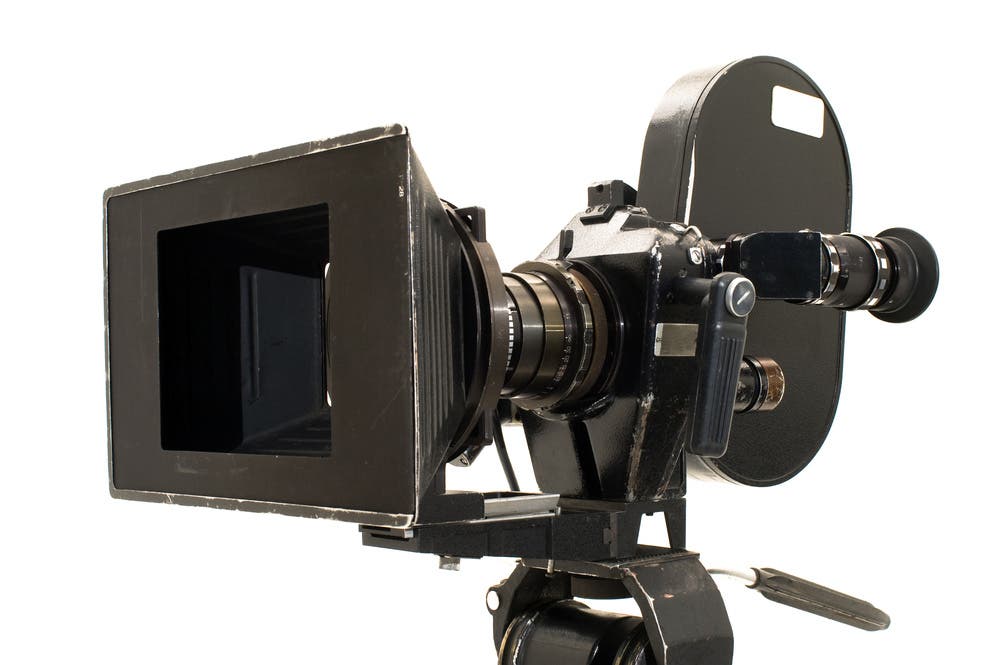
Real cine lenses may cost 10 times more than photo lenses, primarily due to its build and output quality.
Cine Lenses vs Other Lenses
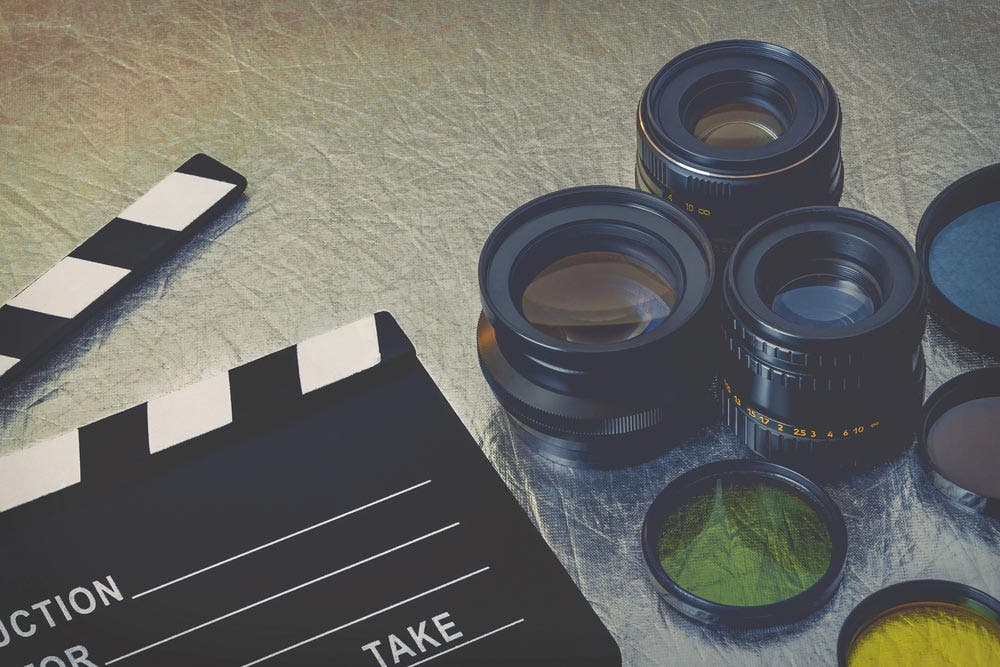
Cine lenses greatly differ from both lower-end and professional person lenses in terms of optical power, construction, and usage. Beneath are merely some of the comparisons of their key features, and it's piece of cake to run into why cine lenses are larger, heavier, and more costly.
| Characteristic | Budget Photo Lens | Professional person Photograph Lens | Cinematics Lens |
| Full range of focal lengths | ✔ | ✔ | Express to cine requirements |
| Calibrated T-stop operation for consistent exposures | x | ten | ✔ |
| Matching paradigm characteristics | 10 | Hardly | ✔ |
| Anamorphic | x | x | ✔ |
| Reliable markings | x | Usually | ✔ |
| Compatible forepart diameters and filter threads | Rarely | Sometimes | ✔ |
| Focus throw | Jerky | Short throw for quick focus | Long throw |
| Aperture ring | x | 10 | ✔ |
| Super smooth zoom | x | Hardly | ✔ |
| Focuses using | AF | AF / Hand | Follow focus system |
| Weather-sealed | Rarely | Ordinarily | ✔ |
| Sturdy and rugged structure | Unlikely | ✔ | ✔ |
| Extending butt when zooming/focusing | ✔ | Sometimes | 10 |
| Consistent physical length | x | x | ✔ |
| Like shooting fish in a barrel service repair | x | 10 | ✔ |
| Consequent weight | x | x | ✔ |
How to Choose a Cine Lens
- Option your "normal" lens
- Add wide-angle and zoom lenses
- Go vintage
- Test your lenses
- Only get what you will use
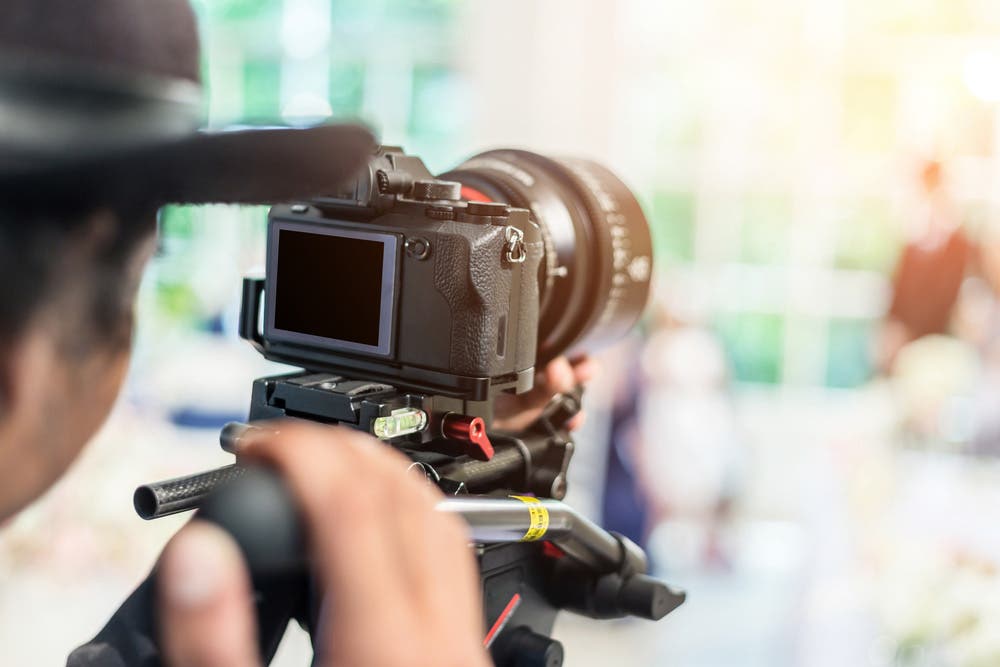
Choosing a cine lens kit can be a very hard decision, especially if you've only just started using cinematics lenses. There are many great cinematics lenses to choose from, such as primes and zooms. It all boils downward to your personal preferences and cinema requirements.
Most shooters choose their lenses depending on what their priority is—focal length, build quality, or output. Then once again, there are other factors to consider, such as the possibility of eventually needing other kinds of lenses forth the way, especially when changing your story or blazon of film.
For narrative film and other similar types of cinematography, the tips below could be very useful for putting together a good lens package.
Choosing a Cinematics Lens Tip #1: Choice your "normal" lens
A "normal" lens is commonly a prime lens that mimics the human eye in terms of bending of view and perspective. These offer a natural and more realistic view of the world, making it the ideal walkaround lens for realistic photography and cinematography. For many, information technology is the 50mm, which is but zoomed in enough to provide a natural perspective for a full-frame 35mm photographic camera sensor. Still, some prefer a wider lens, such as the 35mm or the 40mm, as their normal lens. For smaller-sized camera sensor formats such as the Super 35 and sixteen, an even wider lens is usually needed to reach the angle of view that's similar to your total-frame sensor normal lens.
As a cinematographer or director, your normal lens will be your favorite, primary lens and will usually provide y'all with your "signature" movie output.
Choosing a Cinematics Lens Tip #2: Add broad-bending and zoom lenses
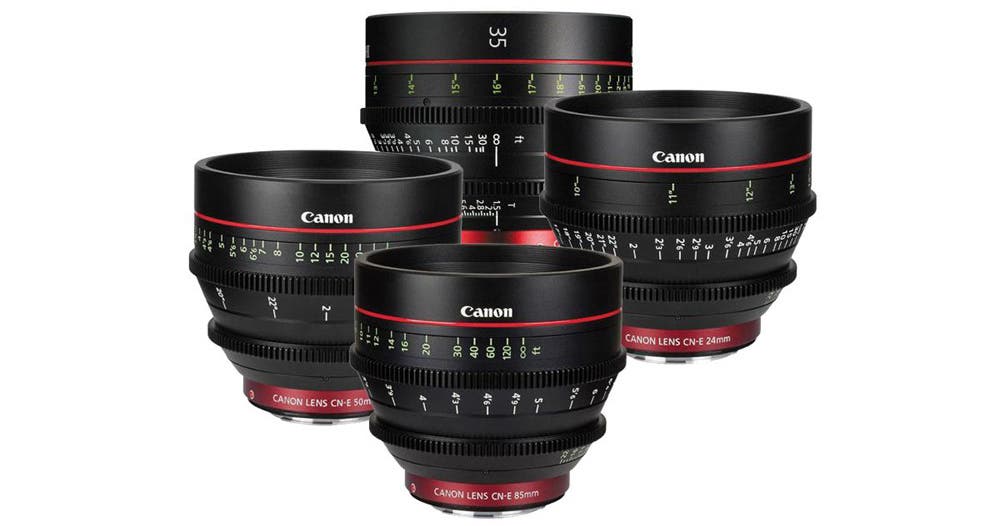
The next pace is really to just complete your prepare with good lenses that offer a wider and tighter perspective than your normal lens. However, many professionals propose that y'all go for multiple prime number lenses as opposed to getting fewer lenses that encompass more than focal lengths. We'll explain why.
Shorter lenses are lighter, faster, wider, and sharper, mainly due to the fact that they don't have to work extra hard to focus at different focal lengths and maintain their optimum performance. While information technology'southward true that they make quick lens changes more challenging and time-consuming, you lot tin at least be assured of more consequent output.
So once more, it's always the shooter's prerogative to go zoom cine lenses, especially if it is crucial to your production or shooting style. If you're assault getting zoom lenses, information technology would exist helpful to get a wider 1 (such as a 24-70mm) and a telephoto one (such every bit the pop focal range of seventy-200mm). These would easily fill the gaps betwixt your primes and finally complete your set.
Choosing a Cine Lens Tip #3: Go vintage
Vintage sets of cine lenses offer great value, despite them not having a few of the newer features that y'all get to enjoy with today's mod cinematics lenses. Brands similar Canon, Nikon, Olympus, and Minolta offer manual vintage SLR lenses that are smaller, more lightweight, and can exist used on most camera systems—even on compatible mirrorless cameras. Older lenses also produce that classic, depression-contrast await that gives your output a more cinematic experience. If you're on a upkeep or are withal raising funds for that dream cine lens, vintage lenses are your best option.
Choosing a Cine Lens Tip #4: Test your lenses
The best way to observe out if you've chosen the correct lenses to buy or rent for your kit (or if you're still missing a piece or two) is to exam your lenses out. Make sure they offer the optical quality that you want for your video, specially the color temperature, sharpness, dissimilarity, color consistency, and even the accuracy of the lens markings. Besides, make sure to test them on the cameras that you plan to mount them on, as the final look also depends on how the lens works with the camera sensor.
Choosing a Cine Learn Tip #v: But get what you lot will utilise
We mentioned earlier that you tin cull to foresee and consider the demands of future productions when choosing a cine lens. However, if you're on a budget, it's even so all-time to choose lenses that will best accommodate your current production. Otherwise, you would be wasting money that you could have spent on other lenses that you'd before long make more use of.
A good way to know the exact lens types that y'all volition need is to go over the script or storyboard and to take annotation of any specific lens requirements that will help you accomplish the required shots. You can as well consult the film director to discuss his vision for the motion picture and have a much better idea about the kinds of cine lenses that you'll need for your specific projection.Relieve
Can y'all use cine lenses for photography?
Absolutely. You just demand to make sure your camera tin be adapted to have the almost common cinema lens mount, the PL mount. Most mirrorless cameras tin can take this mount, though the adapters can oftentimes be expensive. While there is no optical downside to using movie theater lenses for your photography. These lenses are congenital with cinematography in listen, not photography.
Picture palace lenses are bigger, heavier, much more expensive, and nigh exclusively have no machine-focus. Whereas y'all tin can get away with a few less-than-perfectly-abrupt frames in movie as the focus is shifting, with nonetheless photos you want to make sure your focus is tack abrupt. For people who are used to manually focusing this is not an upshot, nevertheless it does accept do and some missed shots to switch from automobile to transmission focusing.
And then why would anyone use a picture palace lens for photography? The look that you go out of certain cinema lenses are unique and certain manufacturers exclusively make cinema lenses. Cooke, with its renowned "Cooke await" is a prime example. Y'all likewise generally get very fast lenses that open up up to fifty-fifty higher apertures than nearly photography lenses. Then even though they may be larger, heavier, and pricier, the uniqueness of the final paradigm might be reason plenty to consider shooting photos with a cinema lens.
Are cine lenses worth it?
While this is a personal consideration and most usually a budgetary determination, for many, cinema lenses are always worth their actress price for the multitude of features and benefits they bring with them.
Focusing is the virtually obvious of the benefits. With cinematics lenses, yous get very precise focusing because there is such a very long barrel rotation with hard stops at the starting time and end points on the focus band. This allows you to attach standard pitched follow focus gears, either wireless or manual. From here, you tin much more than reliably and repeatably rails focus whether you accept a carve up focus puller or are pulling focus yourself as an operator.
Y'all besides mostly get a brighter image through the larger glass elements. Whereas in certain types of photography you can use a tripod and a slower shutter speed to let more light in, cinema usually stays at one-half of the frame rate for smooth motion, meaning at a standard 24 frames per 2d you have a one/48th of a second shutter speed. Having that extra light from the lens can really salvage you from having to raise your ISO or having to have a more light in your scene.
While it is true that the toll to buy or rent cinema lenses is loftier, there are manufacturers putting out corking lenses at lower prices. Sigma, Rokinon, and DZO are some examples.
Source: https://www.adorama.com/alc/what-is-a-cine-lens-and-how-is-it-different-from-a-photo-lens/
Posted by: grimesafflumad.blogspot.com


0 Response to "Are Camera And Video Camera Lenses The Same"
Post a Comment